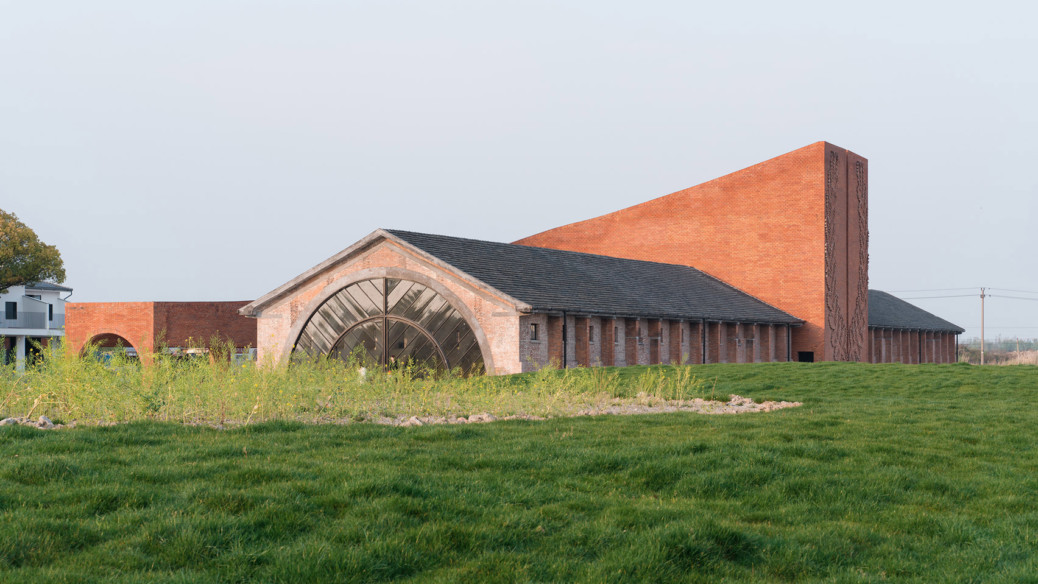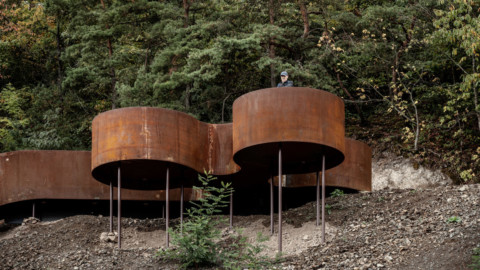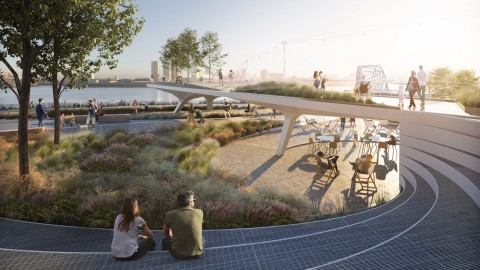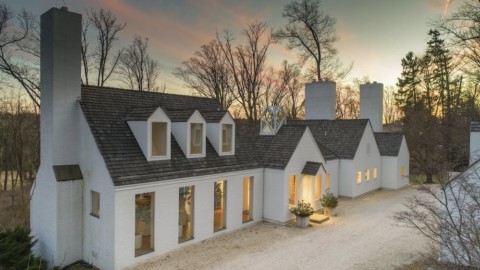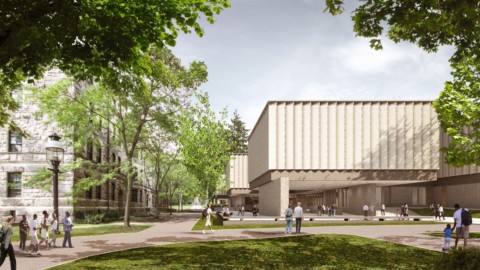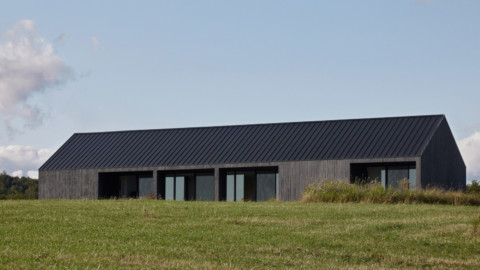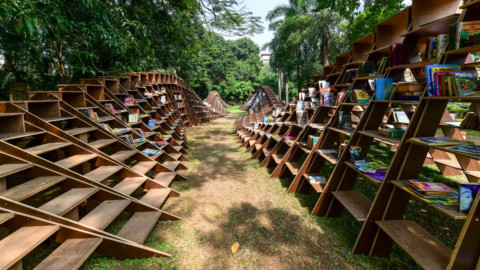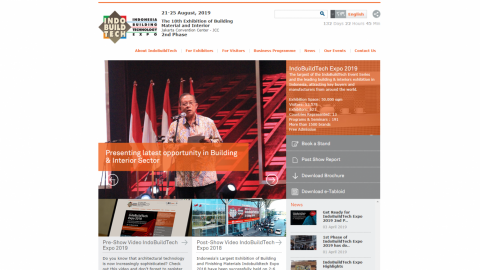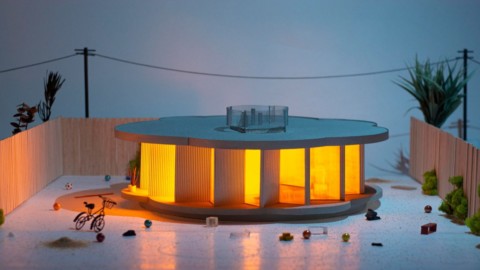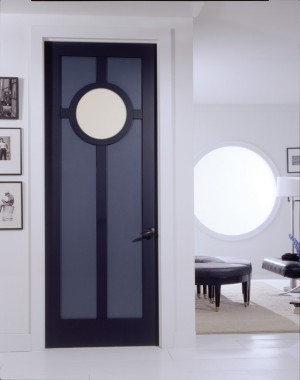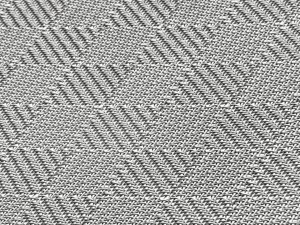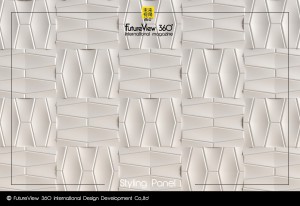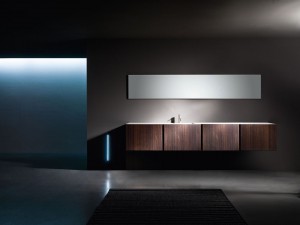Shanghai studio Roarc Renew has slotted two sweeping brick corridors between a pair of disused granaries in Jiaxing, China, to create the TaoCang Art Centre.
Located in the old village of Wangjiangjing in the Zhejiang province, the art gallery was developed as a landmark for the area while demonstrating how new life can be given to old buildings.
Roarc Renew’s design celebrates the architecture of the brick granaries, which were built in the 1950s to store grains, and enlivens them with two complementary corridors that are lined with arches and curve up towards the sky.
上海工作室Roarc Renew在中國嘉興一對廢棄的糧倉之間開了兩條清掃磚的走廊,以創建桃倉藝術中心。
該美術館位於浙江省望江井的老村莊,被發展為該地區的地標性建築,同時展示瞭如何為舊建築賦予新的生命。
Roarc Renew的設計慶祝了19世紀50年代建造的用於儲存穀物的磚制糧倉的建築,並通過兩個互補的走廊使它們變得活潑,該走廊排列成拱形,並向上彎向天空。
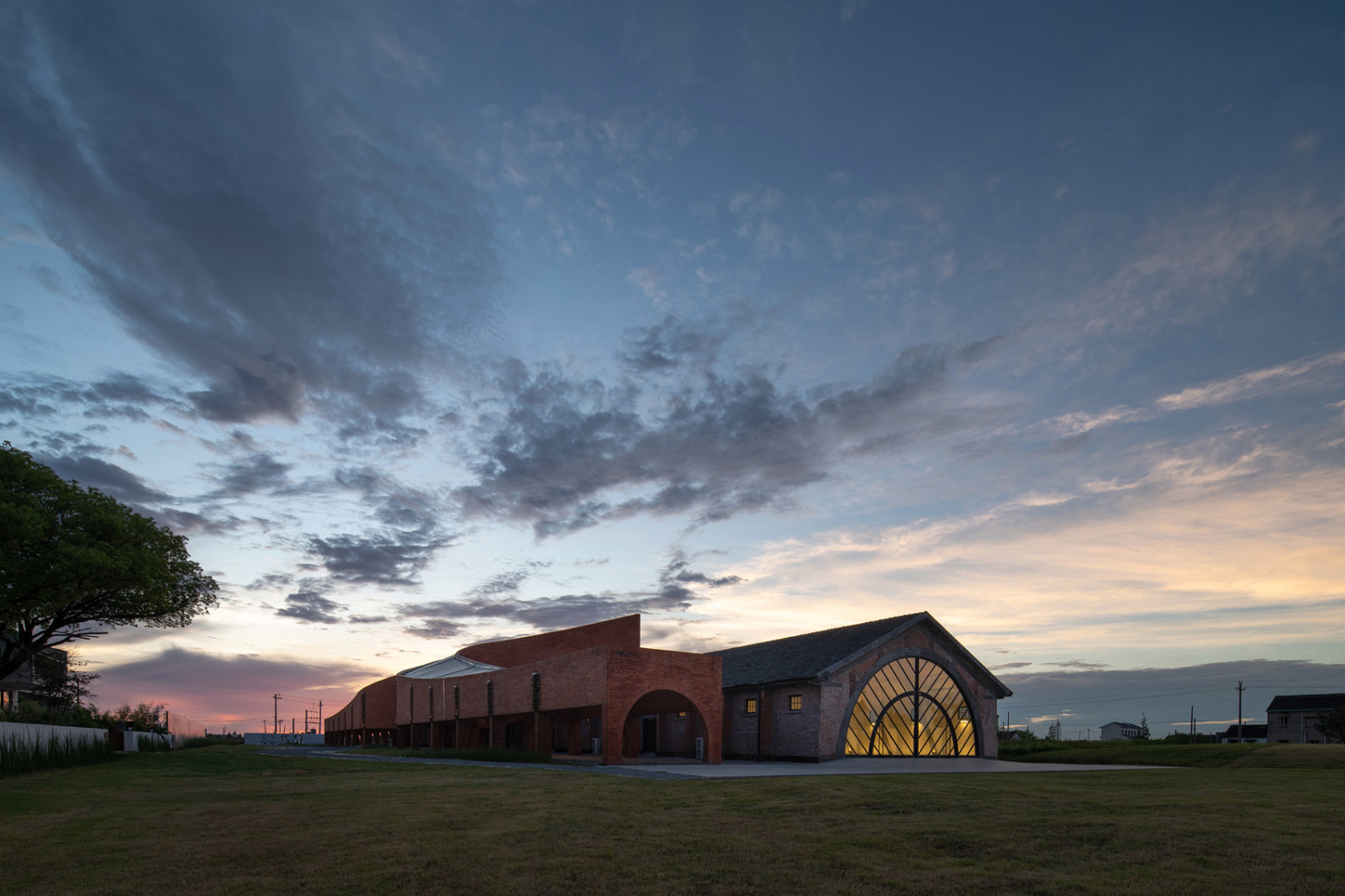
“The two granaries witnessed the development of the whole town,” Roarc Renew told Dezeen.
“So we want to protect this memory in an architectural way, rather than destroying everything,” the studio explained. “There are less and less ancient brick buildings in China now. We should learn and protect more.”
Roarc Renew告訴Dezeen:“兩個糧倉見證了整個小鎮的發展。”
該工作室解釋說:“因此,我們希望以一種體系結構的方式保護這種內存,而不是破壞一切。” “現在中國的古磚建築越來越少。我們應該學習和保護更多。”
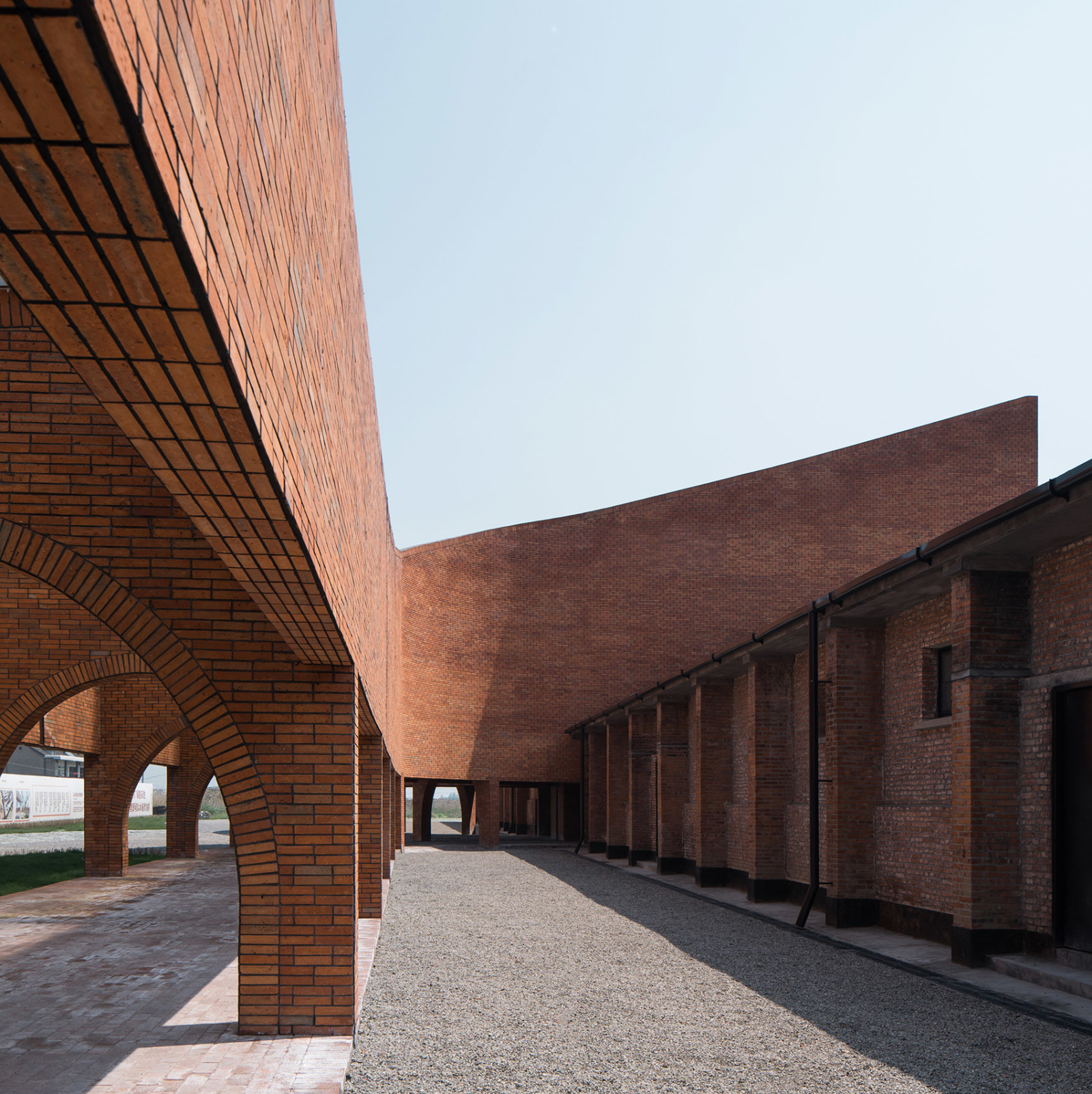
TaoCang Art Centre encompasses 2,448 square meters, with the two granaries functioning as its main exhibition spaces. One will be used as a commercial gallery, and the other as an art gallery.
The external brick corridors that Roarc Renew has added contain the art centre’s auxiliary and circulation spaces, ensuring that significant internal changes were not required to the granaries.
桃倉藝術中心佔地2448平方米,其中兩個糧倉是其主要展覽空間。 一個將被用作商業畫廊,另一個將被用作藝術畫廊。
Roarc Renew添加的外部磚廊包含藝術中心的輔助和流通空間,從而確保了糧倉不需要進行重大內部更改。
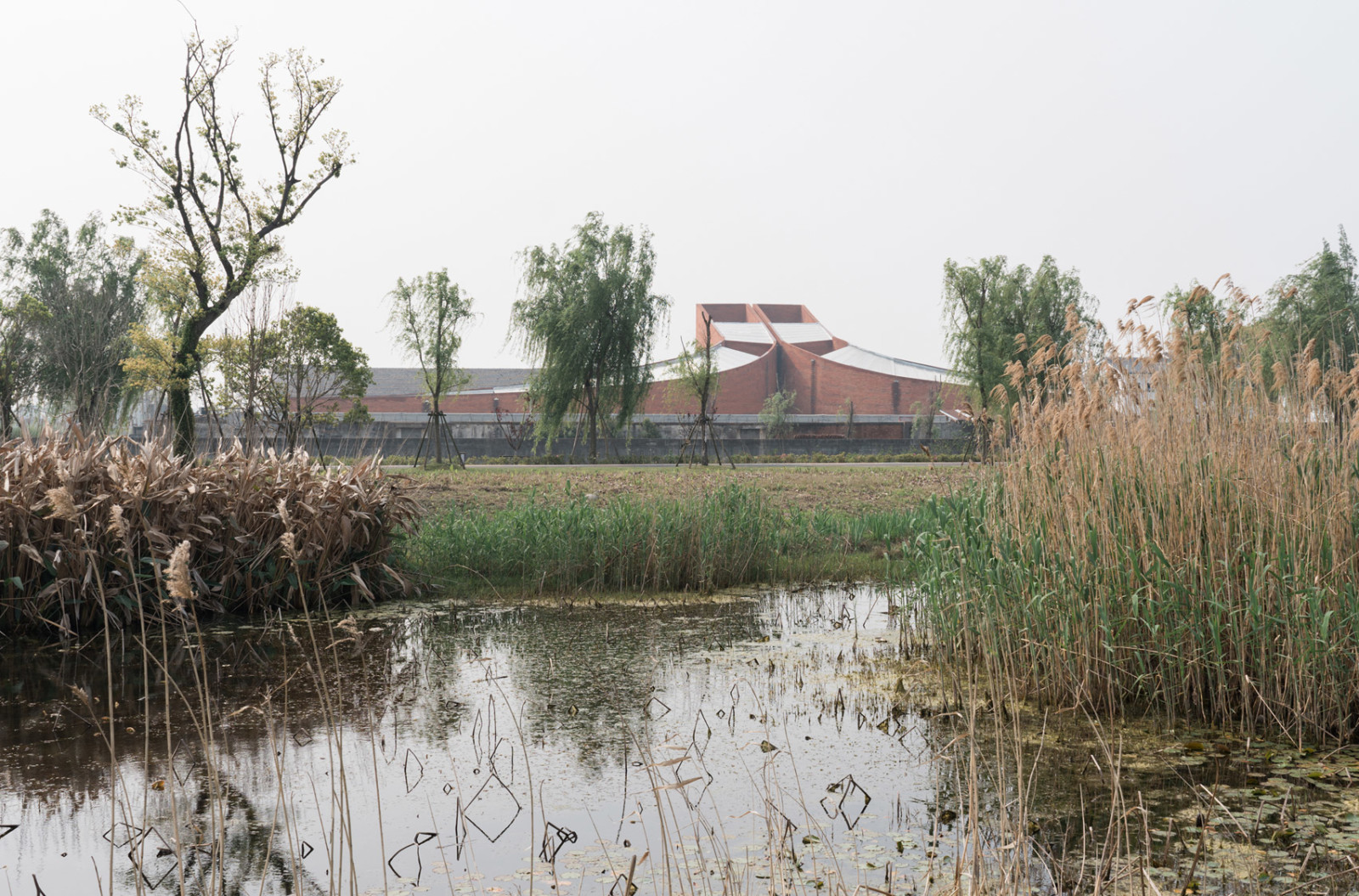
“Acting as the accompanying space for an art museum, the corridors allow for extending exhibition space externally in a way to protect the internal,” the studio explained.
“Through all these architectural efforts, we are paying our tribute and respect to the history of the old granaries.”
該工作室解釋說:“作為美術館的附屬空間,走廊允許在外部擴展展覽空間,以保護內部空間。”
“通過所有這些架構上的努力,我們向舊糧倉的歷史致敬和尊重。”
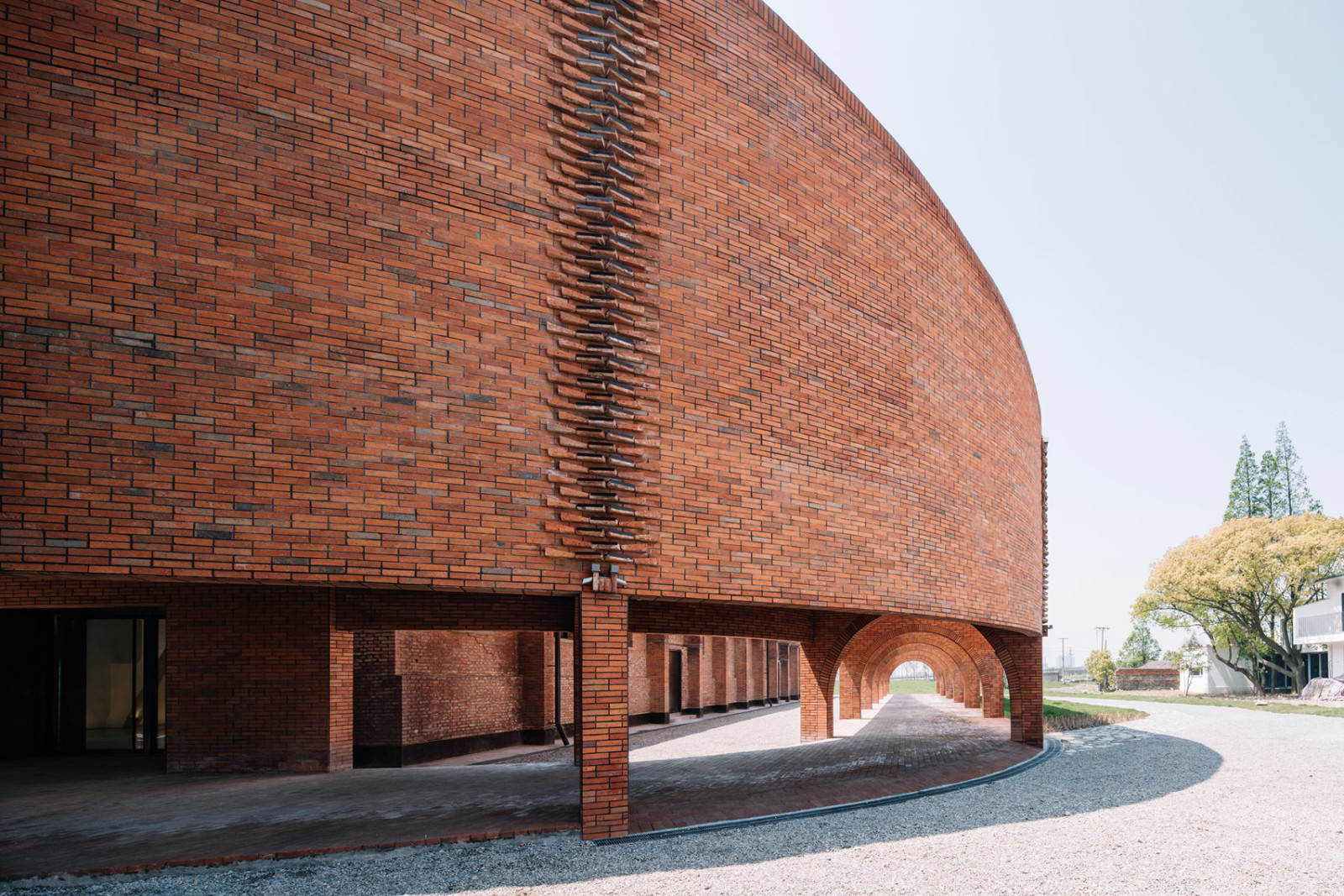
The granaries were chosen as TaoCang Art Center’s main exhibition spaces because they have large, open interiors, achieved with arched, concrete roof structures built by local Chinese craftsmen.
These concrete arches have been left exposed inside and painted white to form a backdrop to the artwork.
The other only changes that Roarc Renew made to the granaries is the addition of large revolving semi-circular doors at either end and paintings of lotus flowers on the floors. These murals pay homage to the village’s lotus-flower industry and pond adjacent to the site.
穀倉之所以被選為桃倉藝術中心的主要展覽空間,是因為它們具有寬敞,開放的內部空間,而這些內部空間是由當地中國工匠建造的拱形混凝土屋頂結構實現的。
這些混凝土拱門一直暴露在內部,並漆成白色以形成藝術品的背景。
Roarc Renew對糧倉所做的其他唯一更改是在兩端增加了大型旋轉半圓形門,並在地板上畫了蓮花。 這些壁畫向村里的蓮花產業和該地點附近的池塘致敬。
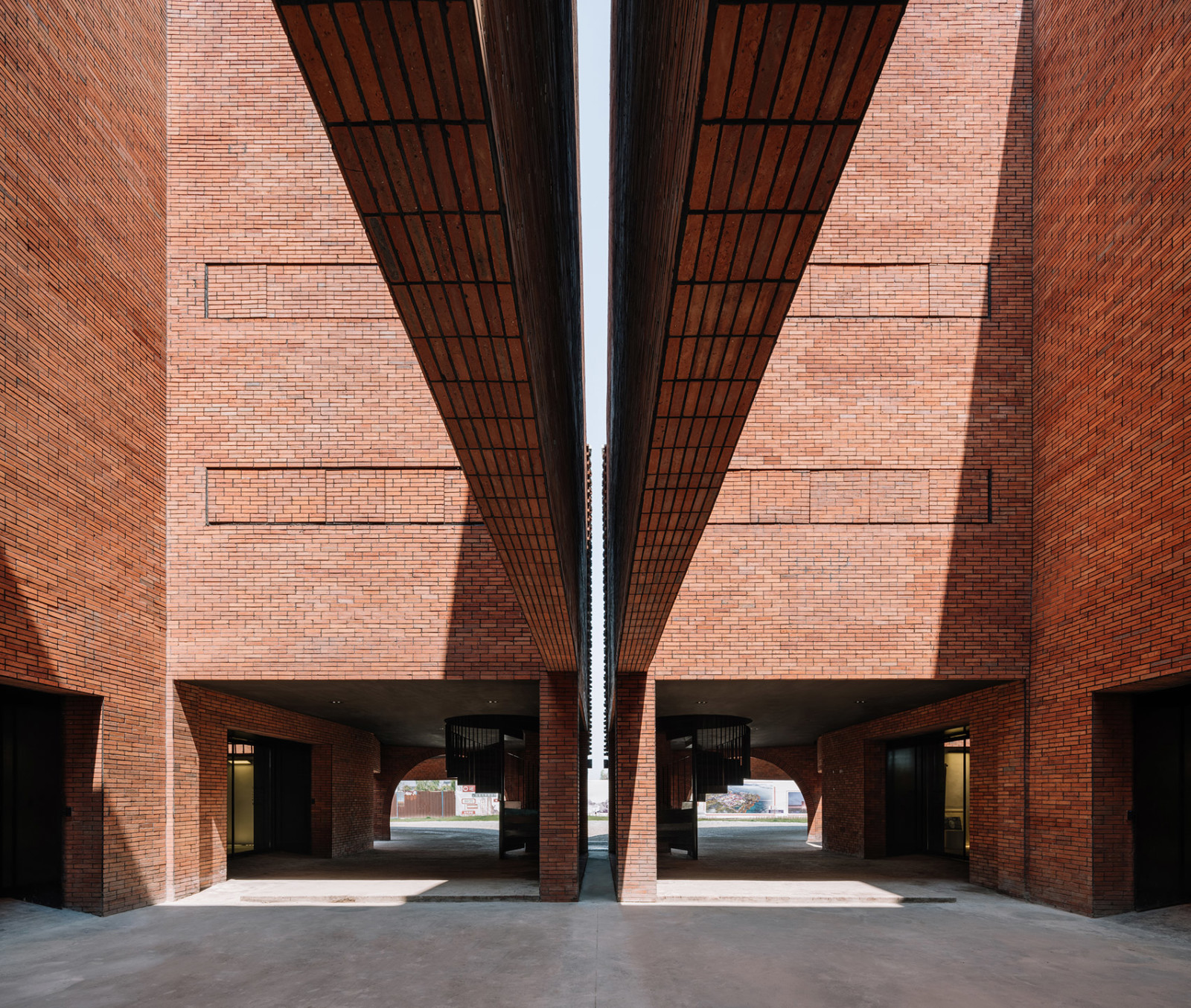
TaoCang Art Center’s corridors are lined with curved brick arches and run in parallel to the old granaries, before winding into the gap between them and curving up towards the sky.
This design was developed by Roarc Renew to create a dramatic “monument-like” structure that also complemented and echoed the design of the granaries.
桃倉藝術中心的走廊兩旁排列著彎曲的磚砌拱門,與老糧倉平行,然後蜿蜒進入它們之間的縫隙,然後向天空彎曲。
此設計由Roarc Renew開發,以創建一種引人注目的“類似紀念碑”的結構,該結構也補充並呼應了糧倉的設計。
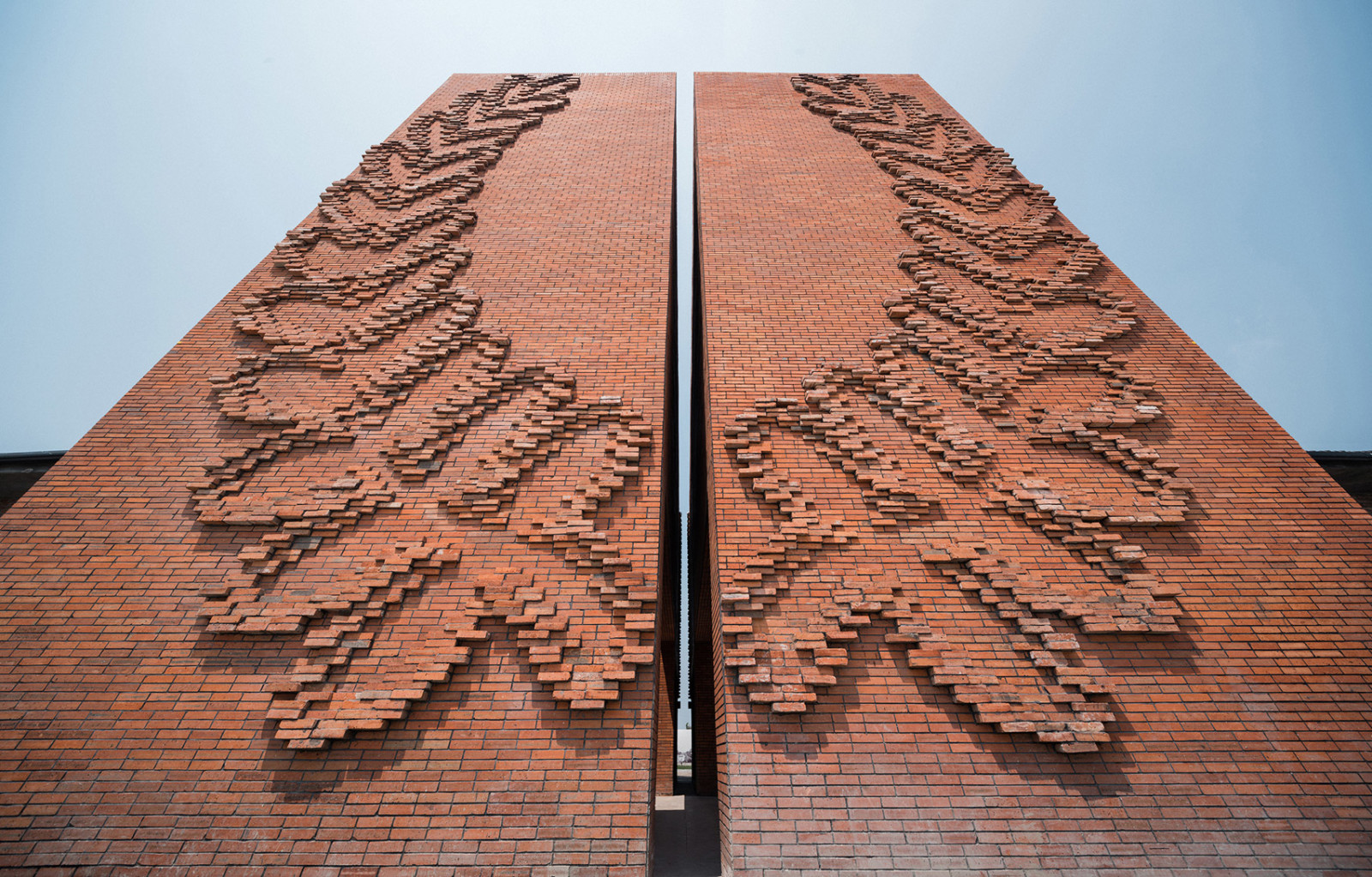
At the point where the corridors meet and sweep upwards, the walls are adorned with a giant image of two wheat ears, made from a pattern of projecting bricks.
This motif was included as a reference to the building’s past and also marks the main entrance point for visitors to TaoCang Art Centre.
在走廊匯合併向上掃過的地方,牆壁上裝飾著兩個小麥耳朵的巨型圖像,該圖像由突出的磚頭圖案製成。
該圖案被作為對建築過去的參照,也標誌著陶倉藝術中心遊客的主要入口。
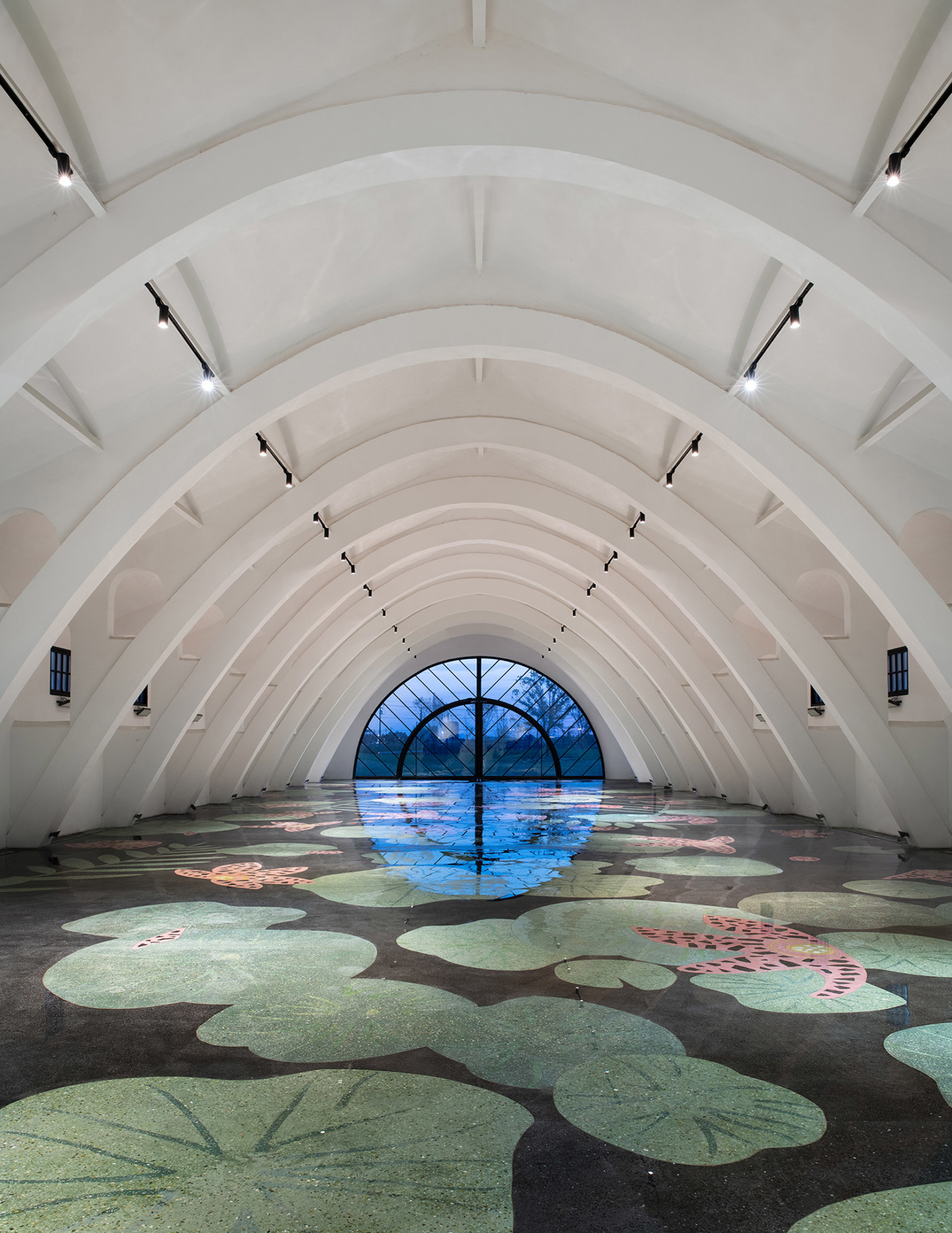
In the future, the TaoCang Art Center’s corridors will be developed to contain more facilities such as restaurants, coffee shops and souvenir shops to support the operation of the facility.
According to Roarc Renew, this will be achieved by inserting full-height glass into the openings of the corridors to transform them into indoor spaces.
將來,將開發桃倉藝術中心的走廊,以容納更多的設施,例如餐廳,咖啡店和紀念品商店,以支持該設施的運營。
根據Roarc Renew的說法,這將通過在走廊的開口處插入全高玻璃以將其轉變為室內空間來實現。
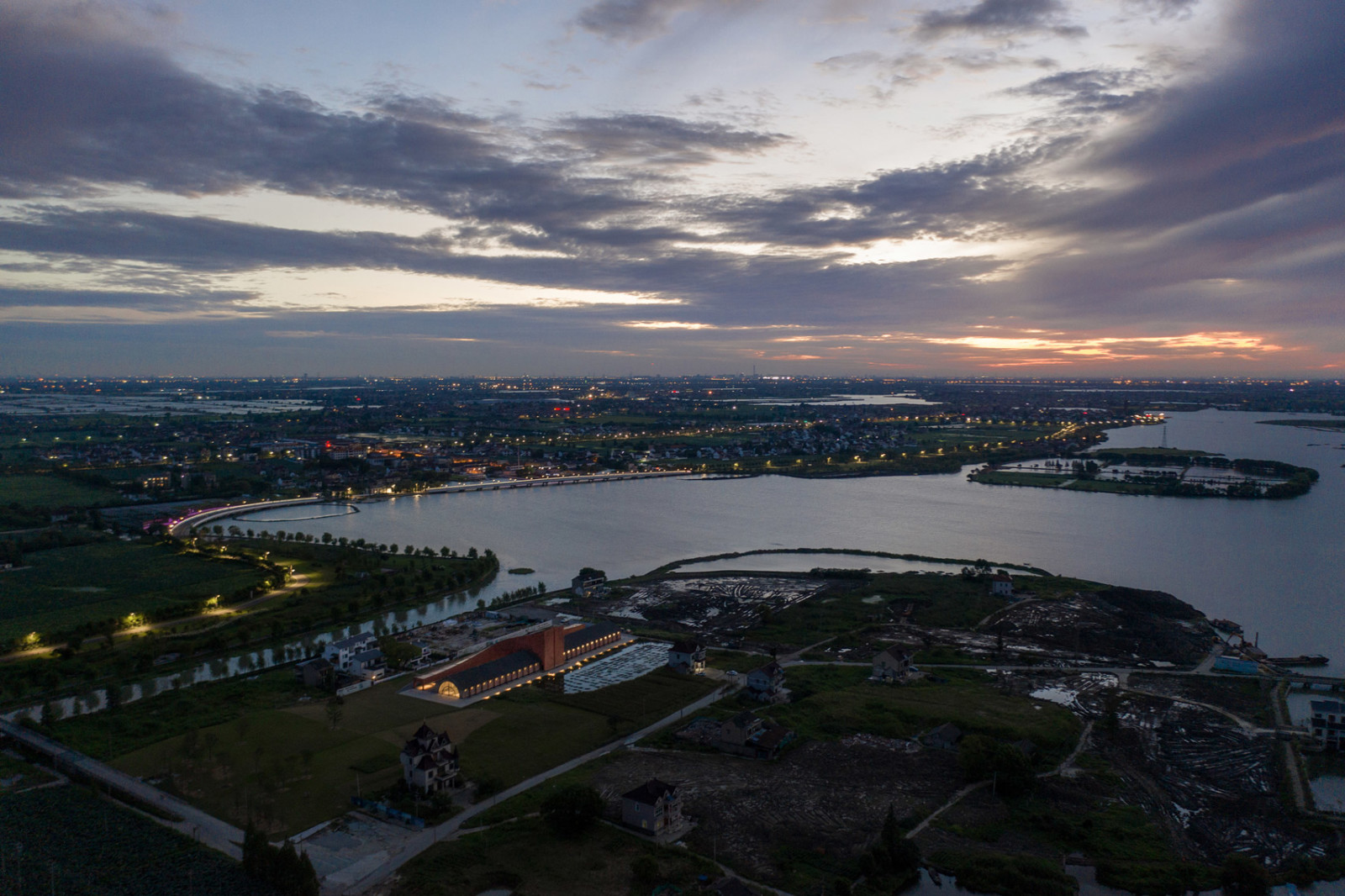
Other recent adaptive reuse projects in China include Atelier XÜK’s conversion of a disused Chinese primary school into a boutique hotel, and Arch Studio’s transformation of an abandoned hutong in Beijing to make a house with curving glass walls.
In a paddy field in the rural outskirts of Xiadi Village, Trace Architecture Office created a bookshop and cafe from the old rammed earth gables of an abandoned house.
Photography is by Wen Studio.
中國最近進行的其他適應性再利用項目包括AtelierXÜK將一所廢棄的中國小學改建為精品酒店,以及Arch Studio將北京一處廢棄的胡同改造成一扇彎曲的玻璃牆房屋。
在夏迪村郊外的一片稻田中,痕跡建築事務所使用一棟廢棄房屋的夯土山牆建造了一家書店和一家咖啡館。
攝影是溫工作室。
FROM:https://www.dezeen.com/2020/10/12/taocang-art-centre-roarc-renew-china-architecture/

